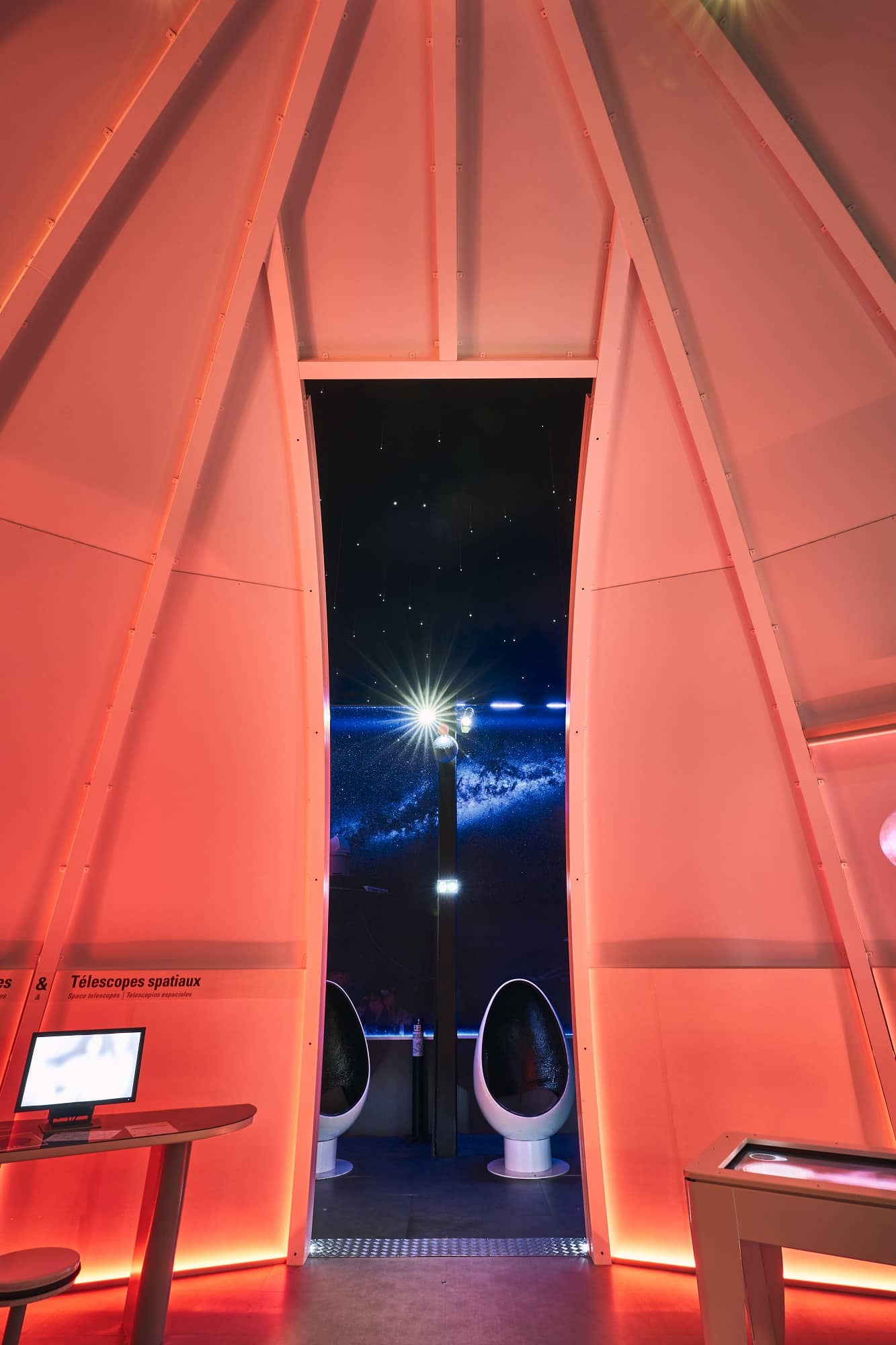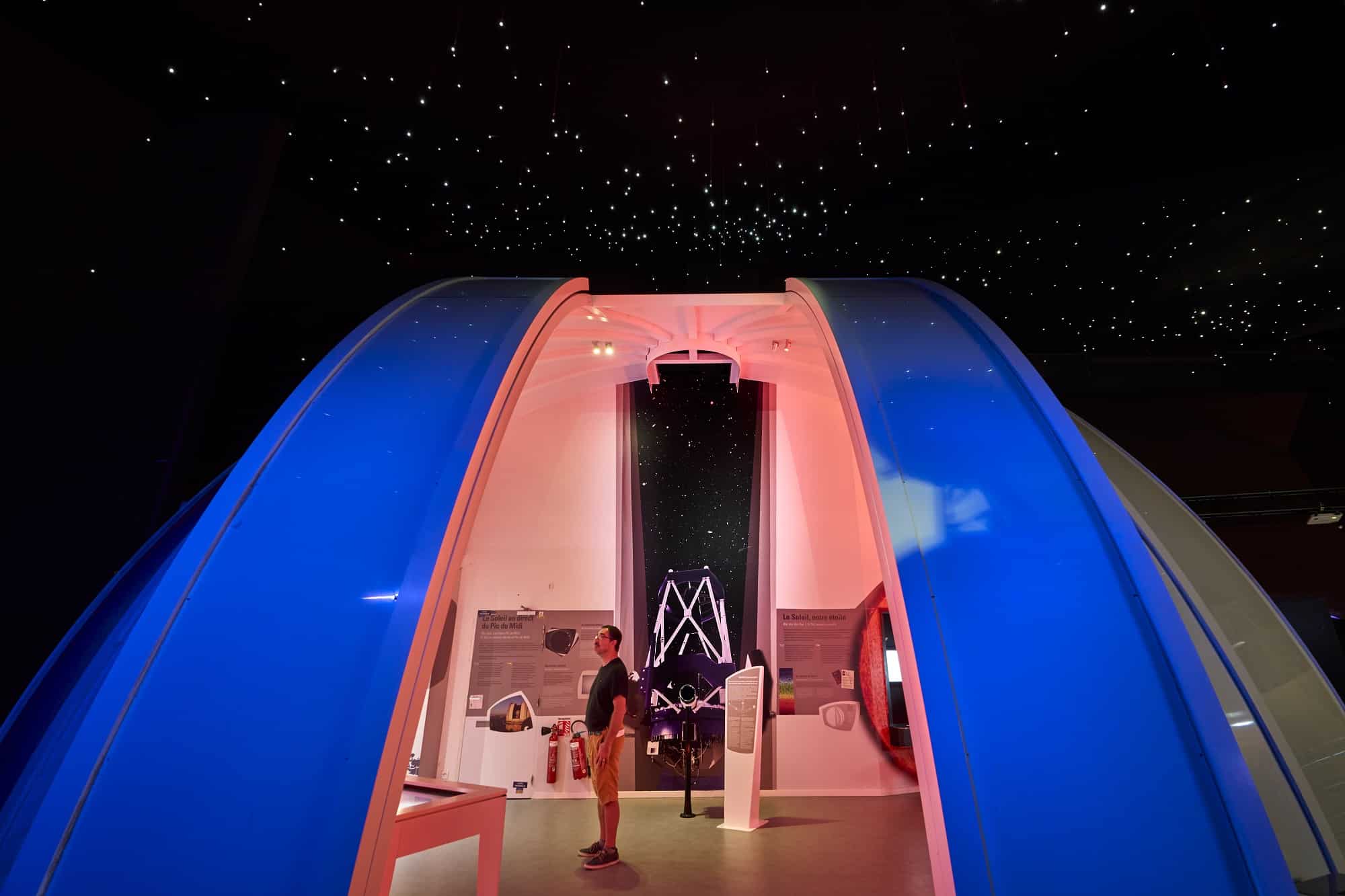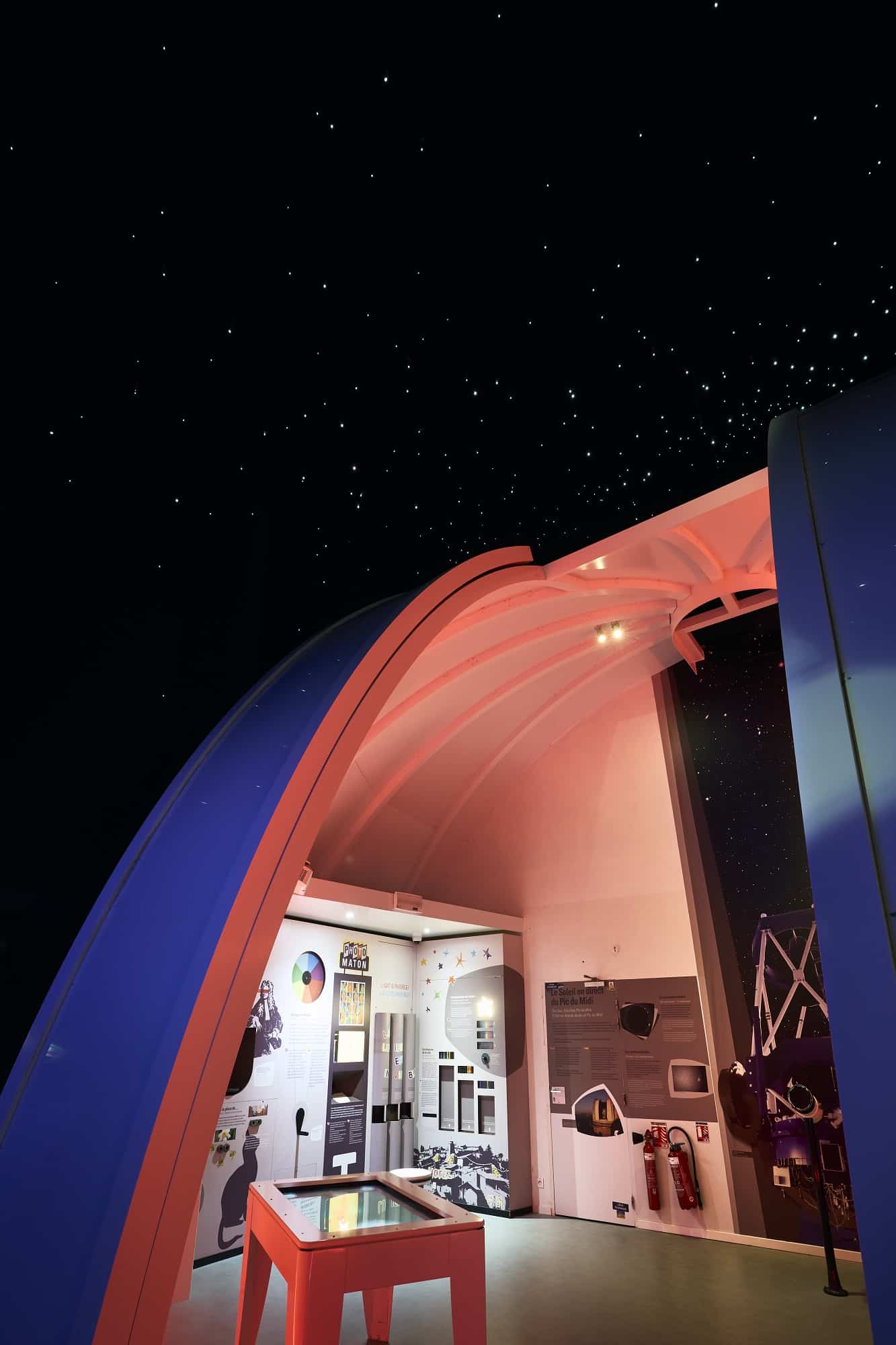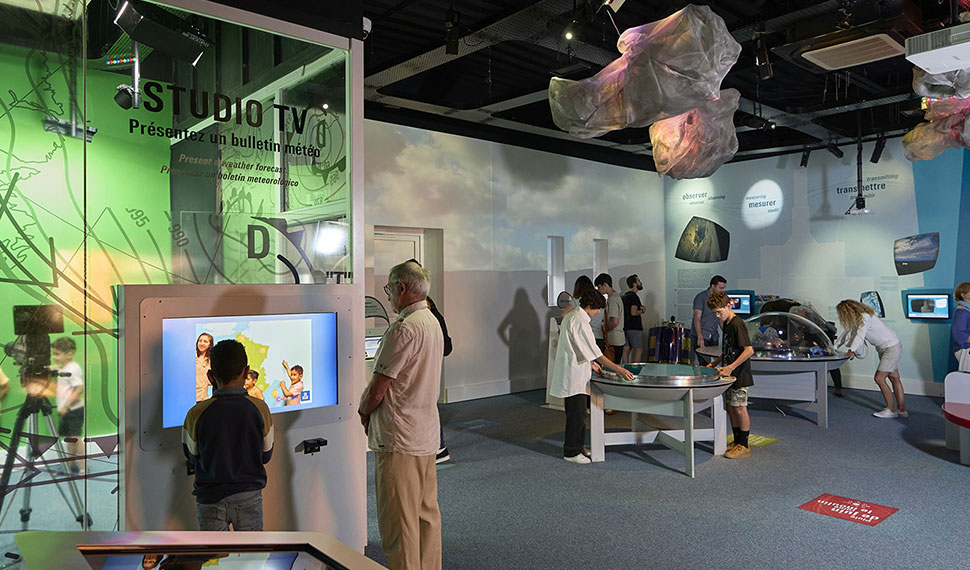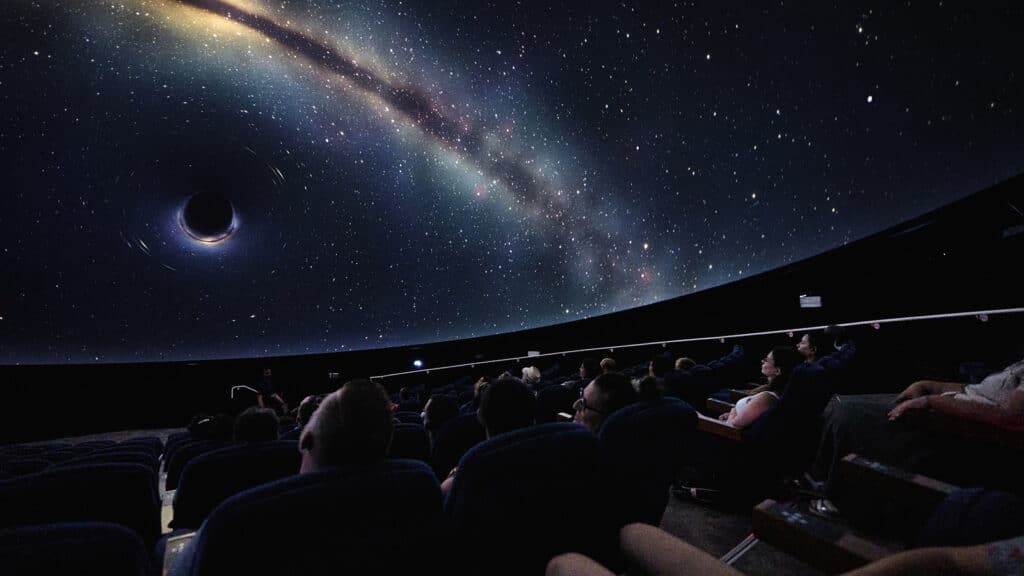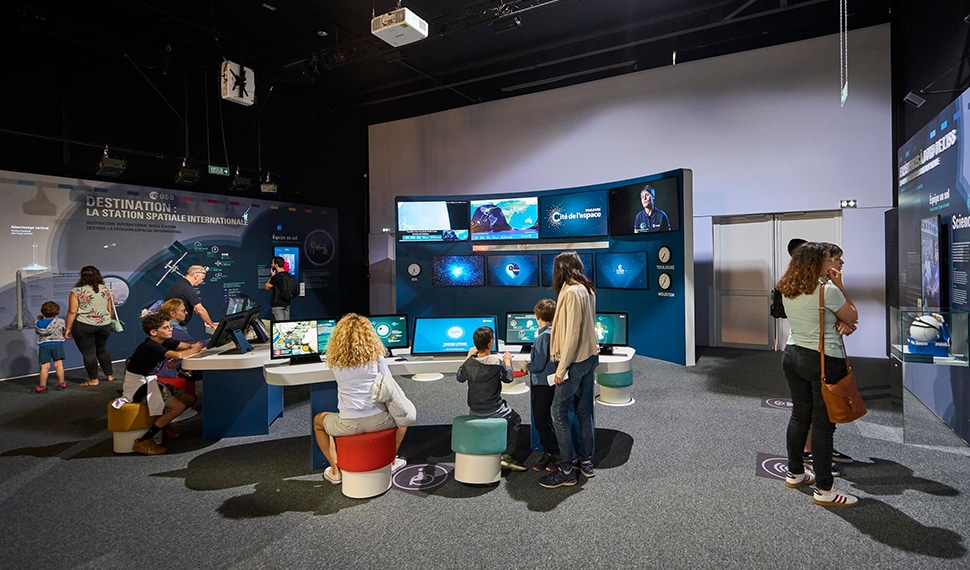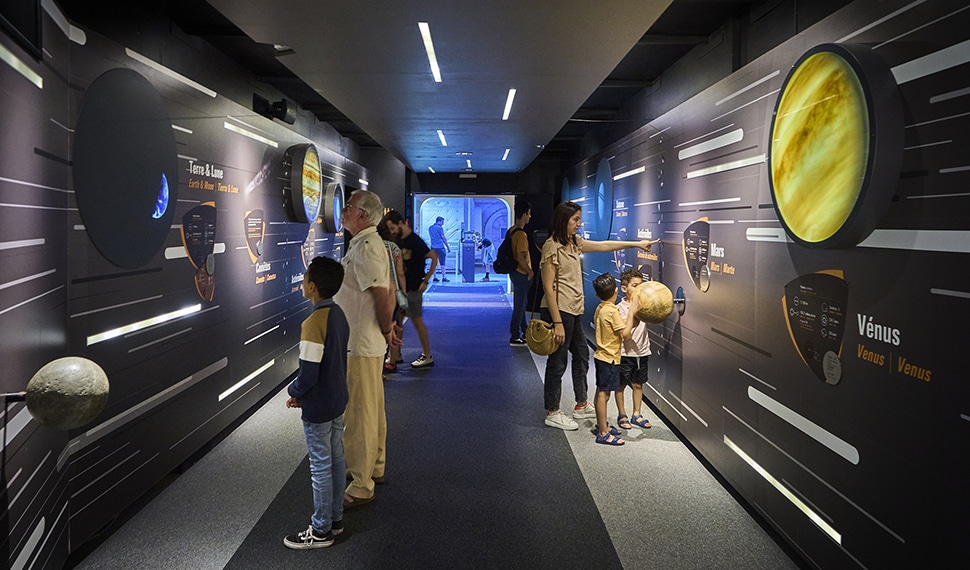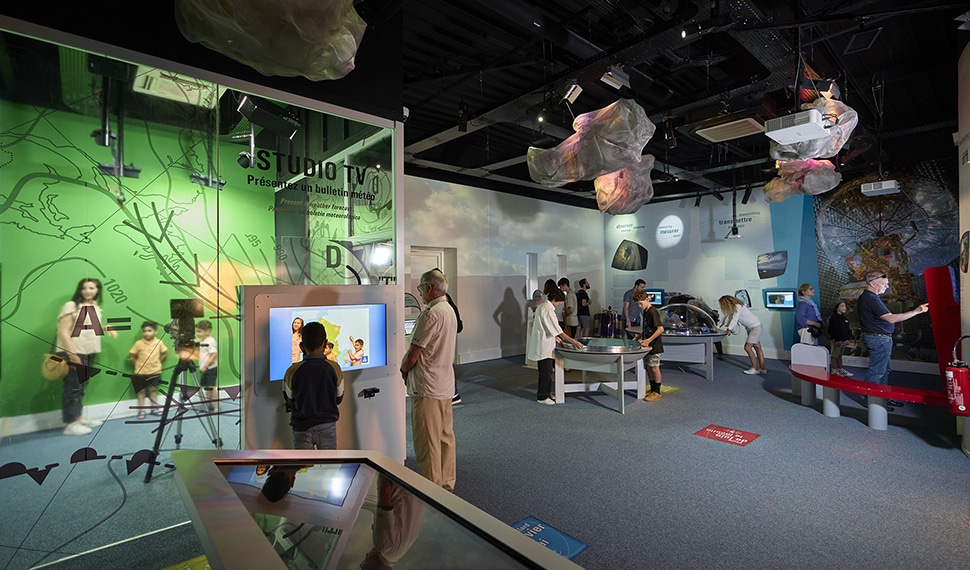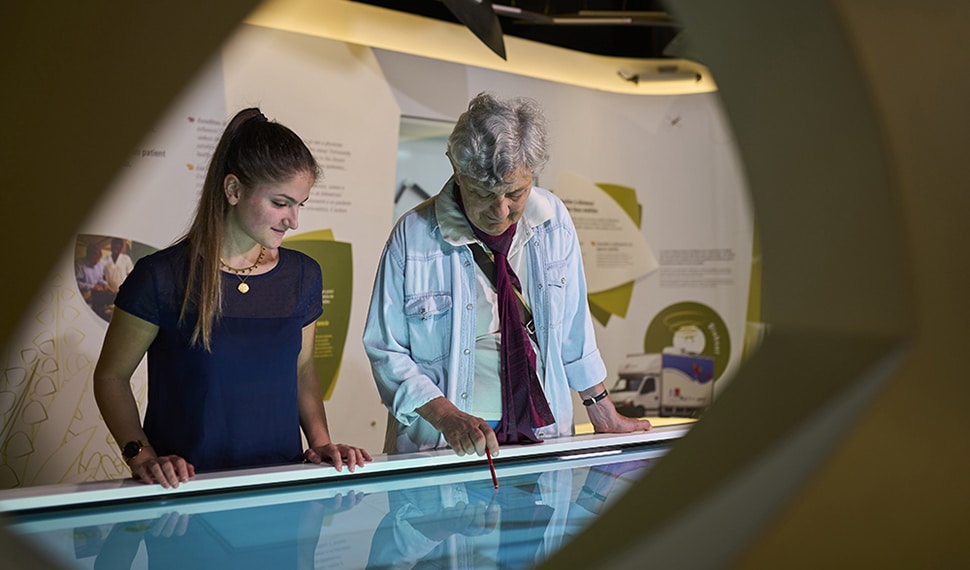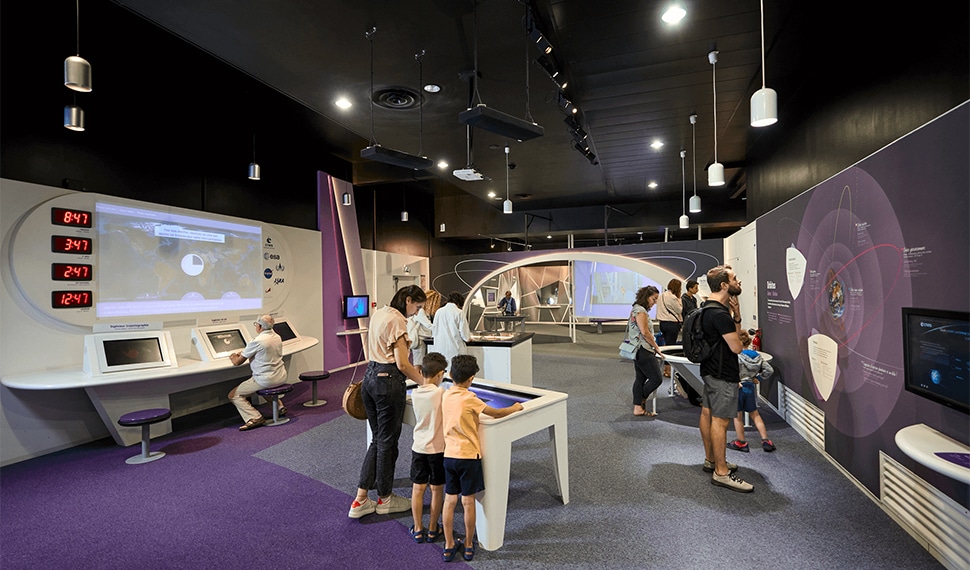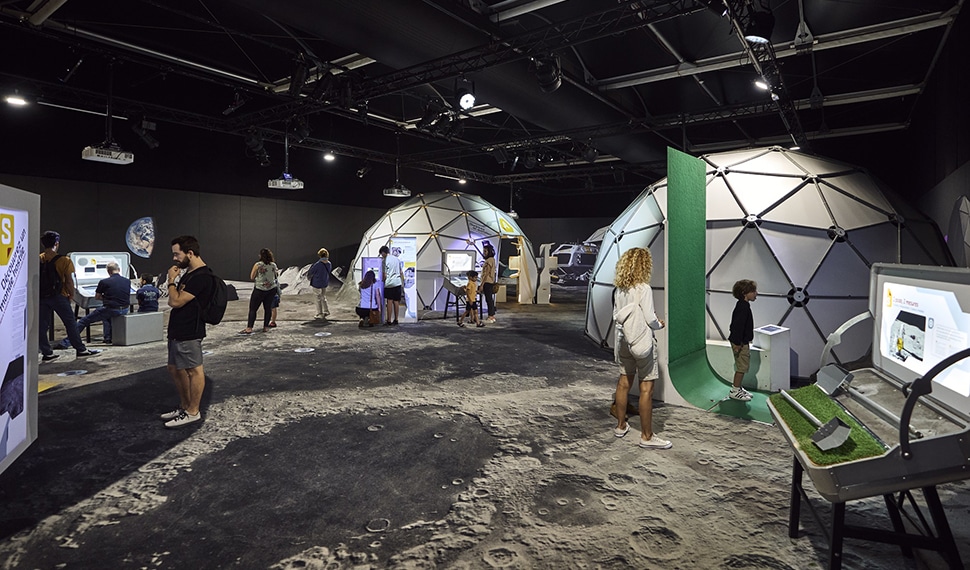DISCOVERING THE UNIVERSE THROUGH LIGHT
Our understanding of the Universe is enabled, for the most part, by the light that comes from distant objects. On Earth or in space, observatories go beyond the limits of our eyes and scan the sky through infrared, ultraviolet, radio waves and in other ways.
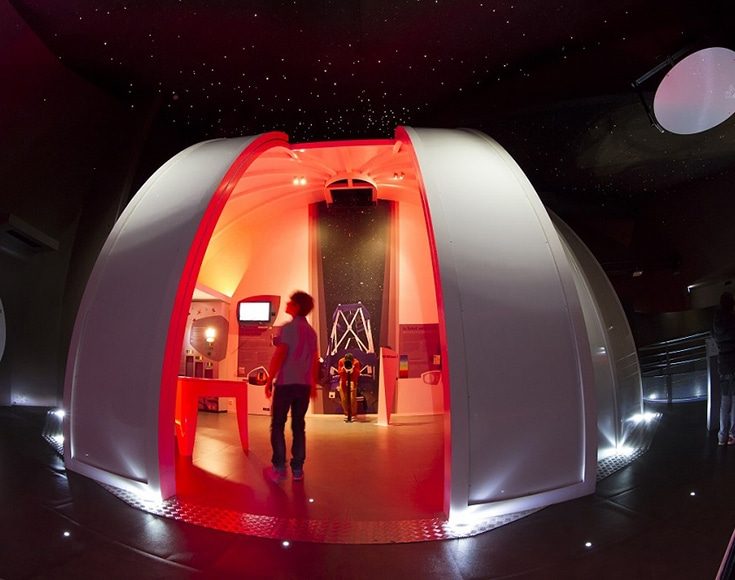
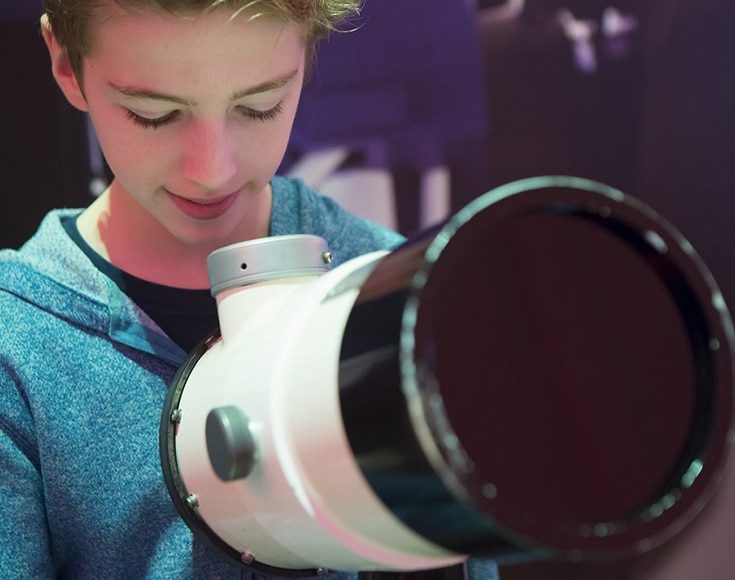
OBSERVE THE BIG BANG AND THE GALAXIES
With the naked eye, admire these different portraits of the cosmos which explain the Big Bang, the formation of galaxies or planetary systems.
Under the dome, use the various telescopes to observe the sky, this time through the tools and techniques created by Mankind.
GALILEO'S BRILLIANT IDEA
In 1609, the Italian Galileo used a telescope to observe the celestial vault. He thus observed the reliefs of the Moon and the following year discovered the four main satellites of Jupiter (or Galilean moons in his honour). With this brilliant idea, he marked the beginning of an era where astronomers use instruments to look at the sky beyond the limits of the human eye.
